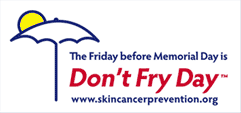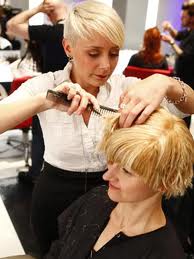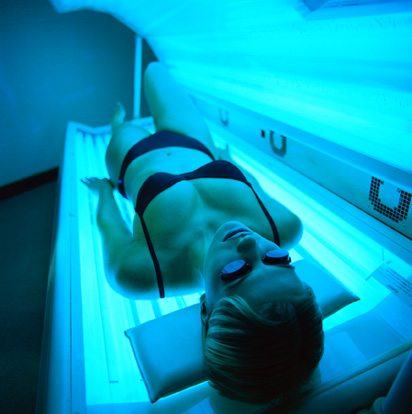 On Monday, The Scientist printed a valuable article linking to a TED video and a new book entitled Living Color by Nina Jablonski. The video and book delve into the importance of skin color and types for health and social well-being.
On Monday, The Scientist printed a valuable article linking to a TED video and a new book entitled Living Color by Nina Jablonski. The video and book delve into the importance of skin color and types for health and social well-being.
To me, there are three points of greatest value: 1) that as humans, our personal melanin and intake of ultraviolet radiation (UVR) are vitally important to our individual health, 2) that as migration and evolution has occurred our pigmentation gene is exceptionally labile, and 3) that skin pigmentation and our individual variations are not discussed nearly enough in our society.
Although I am an advocate for more open, honest dialogue about the significant role race has in this country, this argument for better quality health is different. We need to begin also addressing what pigmentation means for the individual and how women have varying skin needs. This message is not about Black, White, Asian, Latino, or any other socially constructed label for race or ethnicity, this is about individual health concerns.
As the author correctly explains, the MC1R gene, which is the gene predominantly responsible for pigmentation, has little variation in African people. Those with darker (or more melanin-rich) skin have a “built-in defense” against harmful ultraviolet radiation, is often ideal for health and normal cell reproduction. However, as humans migrated and evolved there was a depigmentation of skin, leading to lightly pigmented (or melanin-poor) peoples. This mismatch of genetic predisposition and solar regimes can mean very different things for a woman’s health.
For example, Nina Jablonski asserts that, “People of Northern European ancestry, for instance, living in Florida or Australia confront intense UVR conditions with pale, melanin-poor skin and suffer from sunburns, high rates of skin cancer, and accelerated skin aging. People of central African or southern Indian ancestry living in Wisconsin or Wales face low and highly seasonal UVR conditions with exquisitely sun-protected skin and suffer from vitamin D deficiencies as a result.”
Ladies, knowing your body also means knowing the health risks and benefits associated with your skin. Remember, your skin is the largest organ in your body, talk to your health care providers and keep yourself safe!

 Coffee has been widely linked to an array of health benefits including: decreased occurrences of type-2 diabetes; lower risks of Parkinson’s disease; lower risk of colorectal cancer; lower mortality rates; decreased skin cancer risk; and decreased rates of heart failure. Some studies have deemed coffee unhealthy, but according to others, this claim proves inconsistent and improvable. There are disadvantages to drinking coffee such as irritability and insomnia, but in general, coffee proves beneficial. In honor of National Coffee Month, pour yourself a cup or two and reap the following benefits.
Coffee has been widely linked to an array of health benefits including: decreased occurrences of type-2 diabetes; lower risks of Parkinson’s disease; lower risk of colorectal cancer; lower mortality rates; decreased skin cancer risk; and decreased rates of heart failure. Some studies have deemed coffee unhealthy, but according to others, this claim proves inconsistent and improvable. There are disadvantages to drinking coffee such as irritability and insomnia, but in general, coffee proves beneficial. In honor of National Coffee Month, pour yourself a cup or two and reap the following benefits. A new study points to indoor tanning as a cause for melanoma, the most serious type of skin cancer, particularly among young sunbed users. Overall, there was a 20% increased risk for melanoma with any indooor tanning, according to Mathieu Boniol, PhD, of the International Prevention Research institute in Lyon, France, and colleagues. The risk nearly doubled when sunbed use began before age 35.
A new study points to indoor tanning as a cause for melanoma, the most serious type of skin cancer, particularly among young sunbed users. Overall, there was a 20% increased risk for melanoma with any indooor tanning, according to Mathieu Boniol, PhD, of the International Prevention Research institute in Lyon, France, and colleagues. The risk nearly doubled when sunbed use began before age 35. The National Council on Skin Cancer Prevention has designated the Friday before Memorial Day as “Don’t Fry Day.” This year it is May 25. The goal? To make sure people stay safe in the sun and protect their skin while enjoying the outdoors—on “Don’t Fry Day” and every day.
The National Council on Skin Cancer Prevention has designated the Friday before Memorial Day as “Don’t Fry Day.” This year it is May 25. The goal? To make sure people stay safe in the sun and protect their skin while enjoying the outdoors—on “Don’t Fry Day” and every day. Next time you get a haircut, you might end up with a referral to a dermatologist.
Next time you get a haircut, you might end up with a referral to a dermatologist. Even if sunscreens say they’re waterproof, they’re not. Sunscreens can wash off with sweat, or just being in the water. When this happens, their sun protection washes off, too, leaving users at greater risk for burns, premature skin aging and possibly even skin cancer.
Even if sunscreens say they’re waterproof, they’re not. Sunscreens can wash off with sweat, or just being in the water. When this happens, their sun protection washes off, too, leaving users at greater risk for burns, premature skin aging and possibly even skin cancer. cancer, but they are worried about getting wrinkled and being unattractive," said June Robinson, a professor of dermatology at Northwestern University and senior author of a May 17 paper in Archives of Dermatology. "The fear of looking horrible trumped everything else," said Robinson.
cancer, but they are worried about getting wrinkled and being unattractive," said June Robinson, a professor of dermatology at Northwestern University and senior author of a May 17 paper in Archives of Dermatology. "The fear of looking horrible trumped everything else," said Robinson.